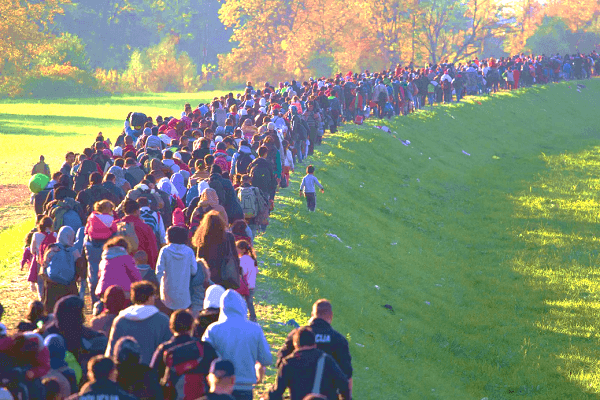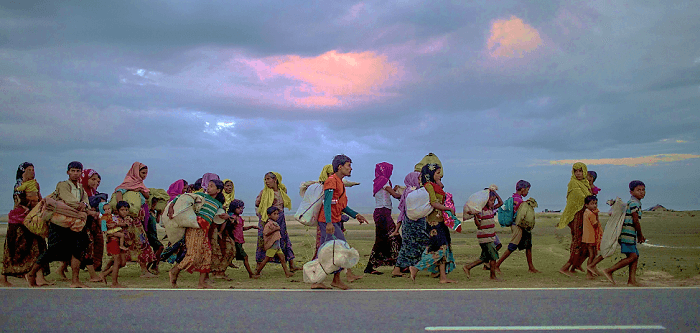Advantages and Disadvantages of MigrationMigration is the movement of a human population from one geographic area to another owing to various circumstances, including environmental, economic, social, and cultural ones. The first geographer to research migratory patterns was Ratzel. Griffith Taylor has written on several species' migrations while presenting the "Tropical Level Theory" of migration. Population transfer is a geographical event that occurs between two geographical entities, according to the UN. In this, the human settlement undergoes long-lasting alterations. 
The first to establish migratory regulations was Ravenstein. He claims that the majority of migrations are short-distance journeys. In general, women make up most short-distance migrants. Economic factors are the primary driver of migration, and rural residents are more likely to do so. The rate of migration rises along with technological advancement. He contends that migration, rather than natural growth, is the primary driver of population expansion in major cities. According to Royle's "Gravity Model" of migration, moving from one place to another becomes more difficult as distance increases. Root Cause of MigrationIn general, there are two categories of variables that influence migration: push factors and pull factors. The pull factor draws individuals to any given region, but the push factor forces people who are already there to leave. There won't be either a compulsion or a desire for the people to move as long as the elements of both groups do not interact and have an impact. Political, social, and economic factors all impact both groups. Some of the factors for migration are: 
I) Economic Factors: In general, individuals choose to live in areas where they have job prospects. People move away from places with unproductive land, less advanced transportation systems, less established industries, and fewer employment opportunities. These elements serve to repel migrants. On the other side, individuals are drawn to emigrate to places with work opportunities and a good standard of living. As a result, these elements are known as attractive groupings. II) Socio-political factor: Because humans are social animals, they like to live among their nearest and dearest. People prefer living alongside those with the same religion, language, and social conventions. On the other hand, if a person lives somewhere where social norms and living conditions are different, he would like to go somewhere else. Even if it is just for a short time, many people like travelling to holy locations like Badrinath, Tirupati, Varanasi, etc. All these factors have led to a concentration of members of one group in various regions of the metropolis. III) Demographic factors: Age is a significant demographic element. Youth migration is greater than that of children and the elderly. This occurs because young people move to pursue employment or better opportunities. Migration TypesFour primary flows are produced by migration that occurs inside a single nation's boundaries. 1. Village-to-village migration Agribusiness is the only industry that supports rural India's economy. For sowing, harvesting, or both, people constantly travel from one hamlet to another. Because there are fewer chances for farming in their country of origin, people from that country travel to their destination country to work in the fields. In addition to this, it is also possible that there is an overabundance of people in the breeding area, which prevents enough jobs from being offered. More men are participating in this migration than females. 2. Village-to-city migration It is usual for people to move from rural to urban settings. This movement mostly occurs to take advantage of work possibilities brought about by the expansion of the industry. The population moves to cities for various reasons, including growing poverty in rural regions, a lack of healthcare facilities, work possibilities, poor pay, and others. 3. Cities to cities migration This kind of migration typically relates to improving the economic situation. To get better economic employment prospects, individuals move from small villages to major cities. In addition to this, large cities provide amenities connected to socio-cultural elements as well as economic ones, drawing individuals to relocate there. 4. City-to-village migration One kind of reverse flow is the migration from the metropolis to the village. People migrate because they find it challenging to live in cities owing to congestion, issues with environmental pollution and bad health, and housing issues. In addition, other natural circumstances cause people to move from the city to the village. Advantages of MigrationFor the nation and its economy, migration offers certain benefits. People shifting from one location to other results in some of the following benefits: 1. It significantly lessens the need for agricultural land in the originating region. Naturally, when a region has a large population, the agricultural lands suffer because of the increased rate of human activity, which can sometimes result in flooding or erosion and render the land unusable for agricultural activities. Many lands will lose their agricultural fertility because of this increased rate of human activity. 2. In the region of origin, it lessens the population strain on social facilities. You will always find a lot of traffic congestion, accidents, fire breakouts, and a lot of people in the hospital needing medical treatment in regions that are highly inhabited. The tension is lessened by the availability of the most fundamental social amenities to the general populace when fewer individuals remain in the country as a result of migration. 3. It gives the receiving region migratory labour. When individuals move, they become part of the labour force in the receiving or destination region and contribute to the economy there, which aids in the receiving country's unexpectedly rapid growth and development. 4. It guarantees that capital flows to the receiving region. Since the rate of capital investment will grow in the receiving region because of migration, both regions stand to gain. People that move will want to settle down, and this boosts the economy of the area as well. 5. It encourages the growth of social facilities in the receiving area. Social amenities are improved in the area where people relocate, increasing regional production and safeguarding lives. 6. It stimulates the recipient region's markets. In order to fulfil the demands of the migrant, migration forces the receiving region to increase production rates. As a result, the market grows, and new investment possibilities are available. 7. It encourages cultural fusion. Cultural integration is more likely to occur when individuals migrate since they will ultimately settle down, share their customs with others, and eventually engage in intertribal activities like marriage and cultural variety. Disadvantages of MigrationMigration has numerous disadvantages as well let's have a look at these 1. It encourages social vices. In an effort to live, people who lack skills or work move to another location, where some of them become involved in social vices like crime and armed robbery. 2. The high cost of living in the receiving region rises as a result. Due to the increased population in the receiving regions, the cost of life skyrockets, resulting in scarcity and poverty. 3. It strains social services in the region that is receiving it. Although migration reduces strain on social amenities in the source location, the pressure typically shifts to the receiving region. 4. It causes the source region to lose healthy men and young people. Work is diminished when those who should make up the source region's workforce move to another area, and soon the source region starts to run into issues with a labour shortage. 5. It causes congestion in the receiving region's housing and transportation systems. There will undoubtedly be a housing and transportation shortage in the receiving area since even the migrants will need a place to stay. 6. It causes the source region's output to fall. Usually, migration causes a reduction in the output rate in the area where the migrants originally came from. It causes unemployment in the receiving region; the receiving region's government may Not having done sufficient planning for the migrants' employment will ultimately result in unemployment. 7. It also causes a cultural breakdown in the region of origin. When those who are expected to preserve local traditions and customs migrate, the lost or lost and destroyed customs and traditions are left behind. After weighing the benefits and drawbacks of moving, especially if you're searching for better economic opportunities, take another look before moving. How to solve the migration problem in India1. Migration-focused policies: Because migration is a crucial component of human progress and is essential to achieve Sustainable Development Goals, preventing it can have unfavourable effects. To achieve equitable growth, lessen migration brought on by distress, and create institutional processes that focus on migration, India must develop policies, strategies, and institutional frameworks. 2. What the state governments do: Finding ways to train and employ eager people to migrate inland can be greatly aided by the India Migration Centre, a research centre run by the Ministry of External Affairs (MEA). Additionally, it will be the duty of the State Governments to oversee that foreign migrants can find jobs in other nations, as the State List of the Indian Constitution covers employment. To prepare individuals for jobs, the central government should actively assist with their training. 3. Behaviour Modification: To enable the transfer of human capital, migration and immigration laws need to be more adaptable. Additionally, it is time to abandon the outdated paradigm in which immigration and migration were largely seen as "asylum seekers." It is now time to acknowledge the significance of migration to human growth. |
 For Videos Join Our Youtube Channel: Join Now
For Videos Join Our Youtube Channel: Join Now
Feedback
- Send your Feedback to [email protected]
Help Others, Please Share










